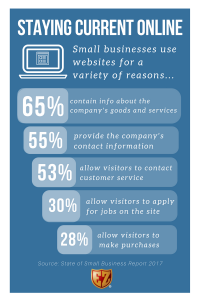When we think of “the last mile” it’s usually in reference to that short, final leg of distance that must be covered to reach or bring something to a destination. The phrase comes out of telecom – used to describe the costly and complex delivery of cables from a provider’s trunk to a customer’s home – but since has been applied to industries like transportation and for such purposes as supply chain management. Marketing has its own last mile, too, particularly when it comes to public relations (PR) and launching and promoting tech products and services.
Theoretically, after countless hours of planning, presentations, hammering out marketing messaging, product development and more, the elements of a campaign should snap together easily with minor tweaks, and then you’re ready for prime time. Unfortunately, plans can be derailed during a period when timing is especially important. Months, even years of preparation can be undone, reducing a hope for big splash to lackluster results that barely create a ripple.
Here are a few ways that can happen and what internal communication heads can do to prevent it.
Involve early, limit later
Let’s say you’re pulling together a press release, as well as supporting materials like media and analyst presentation decks, and suddenly messaging that’s long been nailed down is being reworked by various people. This is often caused by too many people reviewing marketing messaging too late in the process. It can cause delays, water down impact and even introduce errors to information that’s already been painstakingly vetted.
To reduce the likelihood of this happening, communications leaders should get buy in from all stakeholders as early as possible. However, in the final stages of something like a press release, the internal review process should be limited to a select few people, specifically, the chief technology officer or product expert, CEO and legal team. These three ensure the product is positioned correctly, properly aligned with business strategy and all information is accurate.
Problems are compounded when any of these three is seeing new messaging in action for the first time. Because when change rolls down from the top, the impact on the process snowballs and can cause serious delays.
Stay on the horse
Abraham Lincoln coined the phrase, “Don’t swap horses in the middle of the stream.” Wise advice because switching your position part-way through a campaign can cause you to lose control of the reigns, take you off strategy and wash away all the due diligence that’s already been conducted. So, be sure that if you’re making a significant change in position or messaging that it’s really warranted.
If you’re introducing an industry-first product capability, or have any other justifiable leadership position to take, don’t shy away – claim it as long as you can make a defensible case. What’s more, if during the final mile things get a little tricky, it can be tempting to revert back to what you’ve already done, but remember that you’re trying to advance – so persevere.
Further, when it comes to legal, you don’t want a press release (or other material) to read like a disclaimer. You need counsel to protect you, not hold you back, and the best legal teams know what a company is up against when it comes to marketing. Make sure what you are putting out there is readable, accurate and interesting.
Line up support
During that last mile, you could end up in front of technology analysts, particularly if you’re doing some type of major product announcement. There are a number of reasons for doing so. Analysts produce reports on specific topics you’ll want to be a part of – they also make recommendations to clients who are buying technology.
For something like a press release, there are two additional benefits to meeting with analysts. First, you can fine-tune your copy based on their input. Second, you may be able to secure a quote from them that can build third-party credibility – they might even field media calls – though being a paying customer is often required.
Another way to add support is by involving a customer. Again, they should be approached early – the quote finalized as soon as possible and their participation as a press reference assured – so that there are no last-minute surprises. If they are a beta user of a new offering, make sure their experience has been good; you don’t want to learn otherwise during a call with a reporter.
Yet, there is such a thing as too much support. Ideally, for major product news, you want a press release to have no more than three quotes. This should include one each from a top company official, an analyst or industry influencer and a customer. Some companies with an abundance of big-name supporters will sometimes tack on a list of short testimonials after the end of a press release for something like a full-point product upgrade. But in the body of the press release, avoid too many quotes or you could end up burying important details and messaging.
Strengthen don’t sprint
Make no mistake, changes will always need to be made and unforeseen problems will arise, and communications heads need to be flexible and ready to react. Still, the best product news is framed long in advance. This ensures you have a foundation that allows time for adjusting messaging and strengthening outreach.
Keep in mind that when the final mile becomes a crazed sprint, you’re then being controlled by the process and not vice versa. You and your company have done its due diligence and you’re prepared – now is the time to take your campaign across the finish line.
Business & Finance Articles on Business 2 Community
(74)
Report Post


